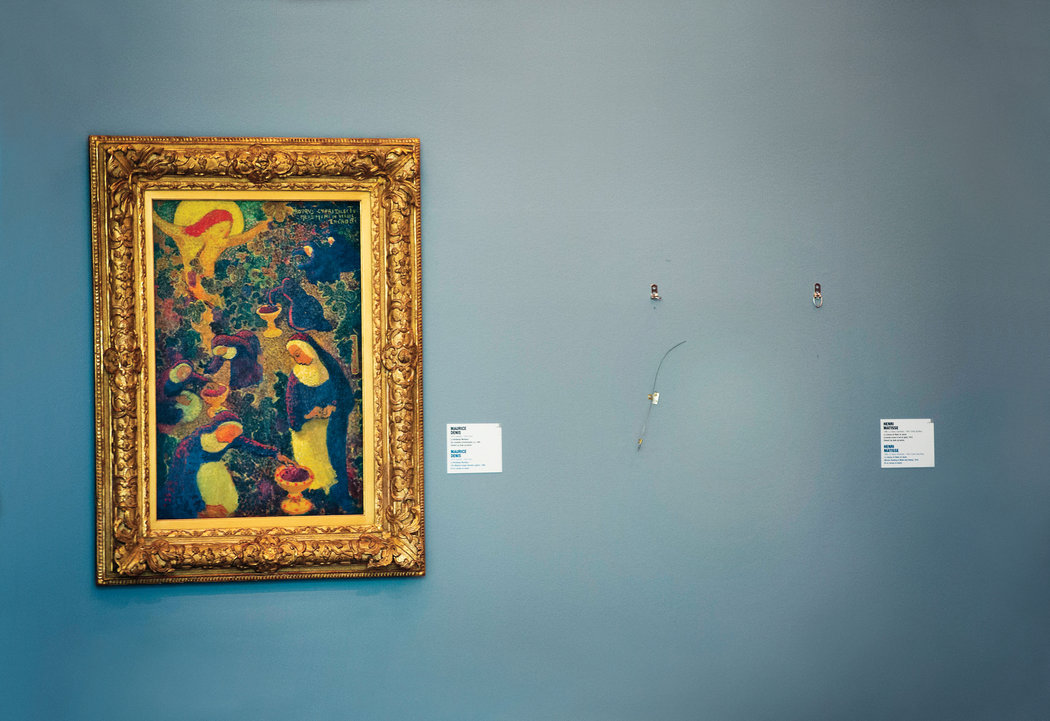When one imagines the theft of a painting or sculpture worth hundreds of thousands of dollars, even millions, what comes to mind is a spicy affair — involving at least one super spy, an alarm system hacker, and getaway driver, just to start. But even the most high profile art theft of all time, the theft of da Vinci’s “Mona Lisa” in 1911 wasn’t much more than an employee stuffing the darn thing/priceless artifact into his smock (More deets here). It was easier then than it is now, of this much I’m sure, but every year it seems that the FBI’s National Stolen Art File only grows in size. This much is a shame, sure, but what if I told you that reputable museums deal in stolen art all the time?
Initially, it may seem hard to believe that institutions like that of the New York Metropolitan Museum of Art, affectionately dubbed ‘The Met’ would involve themselves in a seedy criminal underbelly to score some sketchy art, but it is far more common than one would think. Often, it is difficult to track the origin of an artifact, some 85-90 percent of the artifacts on the market being without provenance, making it difficult to discern if something was once stolen, or far more commonly, looted. Sure, something as popular as the Mona Lisa is too high profile to pawn off on an unsuspecting museum or private collection acquisitions team (this actually being an issue for many art thieves), but what of far older artifacts from civilizations long ago? Their long-dead creators surely are not on the hunt for their stolen work, but more recently, the practice of ‘repatriation’ has allowed the cultures that have been utterly looted to regain what is theirs.
‘Repatriation‘ describes the act of a person returning to their country of origin, making it a form of homecoming. In the world of museums and artifacts, this word was repurposed by historians and curators to describe the act of willfully returning a stolen or looted item to its home, wherever that may be, after learning that it was ill-begotten. If that is the case, you may be wondering how so many American ‘Universal Museums’ have such extensive foreign collections, including whole mummies and precious Japanese ceramics. Simply put, this is because there are no real guidelines for repatriating objects or determining whether they should be returned at all. Much of this is on the honor system, reporting to The International Council of Museums when something “seems fishy”, though one could just as easily grow a collection without giving responsible acquisition a second thought.

Ethically, there is much debate about whether artifacts should be repatriated at all, as it can be difficult to say that particular items belong to a culture. Should we not all have the capability to take pleasure in looking at artifacts from overseas and long ago? Simply put, it’s complicated, and for that reason repatriation is considered on a case by case basis. Do all of the nine trillion Roman marble statues need to be returned to Italy? Perhaps not. Does one of the only nine Cambodian statues from Prasat Chen need to be returned? I’d wager that’s a yes. (And it is, LOOK!).
All this to say, it can be difficult to discern which public a history or historical artifact actually ‘belongs’ to, as legally and ethically, there is very little groundwork for this. Art theft isn’t just a glamorous crime for trade in the millions, it’s a sadly long-standing tradition of our culture of colonization.


I think your evaluation that the significance and and quantity of a particular relic should govern whether or not it’s repariated is spot on. It’s pretty shocking that there is no universal authority that governs the repatriation of artifacts, and that it really just comes down to the ‘mood’ of whomever possesses it at that specific time. There’s also a long history of occupying armies with civilians in tow ‘purchasing’ art and other artifacts of value at a fraction of what they would normally cost. Third world countries, those who emerged as independent nations after periods of colonization, and nations defeated in war often see their relics taken back through nefarious means. It’s interesting how many things we could consider ‘art theft’ when you think about all the unsavory ways collections have been built over the years.
This was kind of interesting; I guess it never really dawned on me but I suppose I could have assumed that art theft was a significant issue, but it’s interesting to know that it is so rampant. In a way, it makes me sad because while I have spent a considerable amount of time in europe, I never found my way to any of these art pieces. It’s surprising that most major museums don’t have better systems of accountability to account for some of these things. I feel like maybe this would be the perfect opportunity for a new app/ tracking devise
This is such a huge issue. Who really “owns” pieces whether they are artworks or artifacts? It can be tough for museums and curators must be careful. One slip and the museum could be out millions of dollars. The debate can be very tricky. I would not like someone taking my things under the pretense that they can preserve them better than I can. That is them argument most make for not returning items to their country of origin.
This idea of repatriation has been a huge one in recent years and I am glad you are giving an overview of it. I believe this problem has not only began in recent years but from centuries past. It just seems that now it has garnered more attention and finally has somewhat a name to the face. People knew what was going on but not many knew what to do or really if it was wrong at all.
Hey Glory, great article and I think you picked a good photo to illustrate your point. The issue of art theft and repatriation has been discussed a lot in our History and Museums course. We read an article about indigenous tribes trying to reclaim their artifacts, many of which were taken through nefarious means such as grave robbing. I think this is a heated debate for a number of reasons and has many complexities that you touch on. Art is meant for public consumption and should be enjoyed by all, but there should be more solid rules regarding repatriation.
Thank you for sharing this. As much time as I have spent in museums, I have never thought of this in this much depth. Most may praise large (and usually American museums) for being responsible and credible with their objects but little do they (I) know that is not the case. I wish you were in our History and Museums class. We have discussed the complications of repatriation, ownership, and provenance. This is such a big deal that no one is really held to a higher standard too, except some overlooked laws and morals.